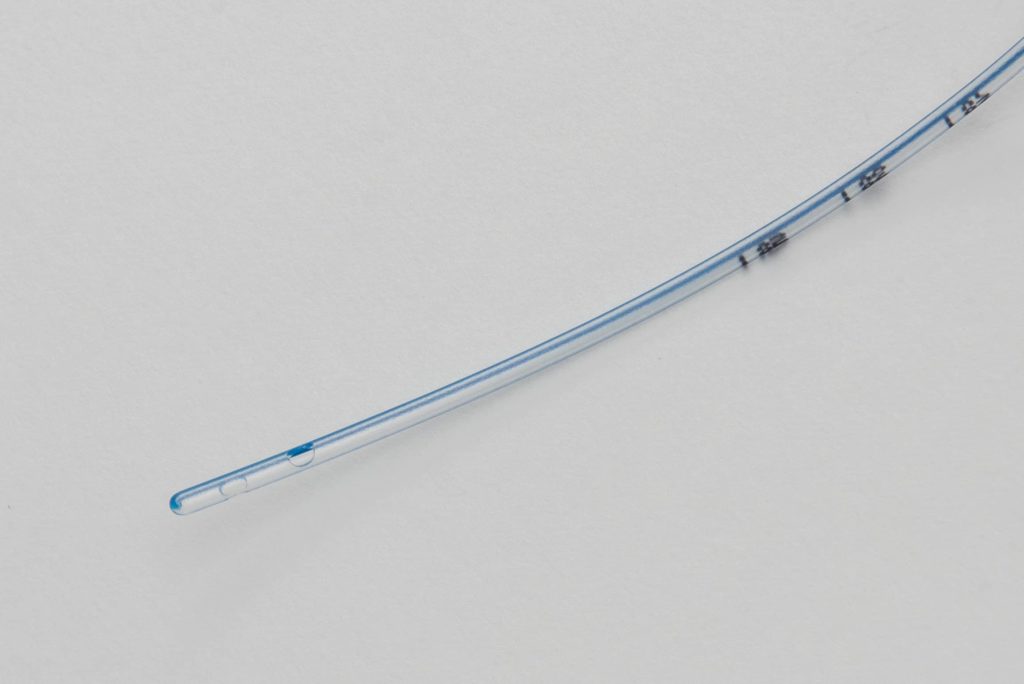Enteral nutrition is prescribed for people whose bowels remain functional, but who are unable to meet their nutritional needs with a normal diet. Artificial feeding has become an essential part of patient care in many settings: from hospitals to long-term treatment facilities to home care. Recent advances in enteral nutrition technology and techniques have made it easier and safer to administer nutritional supplies, helping to improve patient outcomes and quality of life. Here we detail 4 of these major developments and illustrate how our devices benefit.
1- The use of closed systems and new connectors
One of the most recent advances in enteral nutrition is the use of closed systems. These systems allow the administration of nutrition without exposing the feeding tube or the patient to outside contaminants, thereby reducing the risk of infection and other complications. They also facilitate the administration of medications and other treatments through the feeding tube. This can be a significant advantage for patients with multiple health problems. Closed systems can also be used to administer medications to a patient. This technique also limits the risk of dosing errors.
In addition, the closed systems reduce accidental disconnection of the delivery catheter or the introduction of air into the device, thus avoiding complications for the patient. To complement this advance, the ENFit connector on our leads is designed to minimize the risk of misconnections between different medical devices. Misconnections occur when two different devices are connected incorrectly. This can result in serious harm to the patient. Incompatible with other types of connectors, the ENFit connector helps prevent incorrect combination while being easier to use and more secure than previous types of enteral feeding tube connectors.
In addition, our feeding tubes have a closed lower end with lateral outlets to prevent adherence to the stomach mucosa. Overall, these technical advances guarantee correct, safe and effective nutrition for patients.

2- The use of more advanced materials for enteral nutrition
The use of more advanced materials in feeding tubes and other components also marks a turning point in enteral nutrition. These effectively eliminate complications such as blockages and leaks, while improving comfort and ease of use for patients.
Among these innovative materials, polyurethane is a real revolution. It is a high strength biomedical polymer that combines impressive properties with excellent biological compatibility. Its biocompatibility with the organism has been improved over the years to stimulate cell proliferation, viability and thus reduce the occurrence of bacterial infections. It is a modern, robust and durable alternative to silicone.
The advantage of polyurethane in our devices is that it does not require additional plasticization. Its outstanding mechanical properties allow us to design thin-walled probes to provide a larger internal diameter to increase flow. This allows our devices to remain flexible and comfortable once inserted. In addition, advances in pump technology have made it possible to deliver nutrition more precisely, allowing for more personalized care.
3- Better trained professionals and patients
Many patients and caregivers are now trained in proper feeding tube management and monitoring. This also reduces the risk of complications and helps ensure the best possible outcomes. In addition, there is a growing recognition of the importance of patient-centered care, which takes into account individual needs, preferences and goals.
The increasing use of enteral nutrition in hospitals is also leading to expanded roles for the gastroenterologist and surgeon in providing enteral access. There is an ongoing need for physicians to be informed about the various enteral access techniques available:
- Percutaneous endoscopic gastrostomy (PEG);
- percutaneous endoscopic jejunostomy (PEJ);
- button" type devices...
At our level, we try to publish regular information about enteral nutrition in our news section.

4- Development of home enteral nutrition services
The increase in the use of enteral feeding is probably not unrelated to the global increase in the ageing population and the increase in long-term illnesses. These two factors, combined, can lead to swallowing difficulties and malnutrition. This is why home enteral feeding has increased significantly over the last decades.
A home enteral nutrition team consisting of dietitians, nurses and speech therapists has the potential to improve patient satisfaction and reduce costs associated with enteral feeding. The development of the home enteral nutrition (HEN) service thus promotes multidisciplinary teamwork and the development of national and international standards and guidelines.
The NED is generally followed either by a private organization or an association or included in the services of a private or public hospitalization at home. In the latter case, the prescription can be made by the attending physician. The use of this type of follow-up leads us to propose innovative, simple and reliable digestive health solutions, aiming to considerably lighten the daily life of patients.
In conclusion, these recent advances in enteral nutrition have contributed to improved patient outcomes and quality of life. But, there is still much to be done. As the population continues to age and the prevalence of chronic diseases such as diabetes and heart disease increases, the demand for enteral nutrition is expected to grow. Medical device manufacturers, healthcare providers and researchers will need to continue to work together to develop new and innovative solutions to meet this growing demand.
Sources :
American Journal of Gastroenterology (Springer Nature) November 1992, Vol. 87 Issue 11, p1547-1553. 7 p. 4 Black and White Photographs, 4 Charts. Author : Baskin, William N.
Recent advances in Enteral Nutrition by Omorogieva Ojo and Joanne Brooke
Enteral nutrition by François Cessot, Jean-Claude Desport and Denis Sautereau



